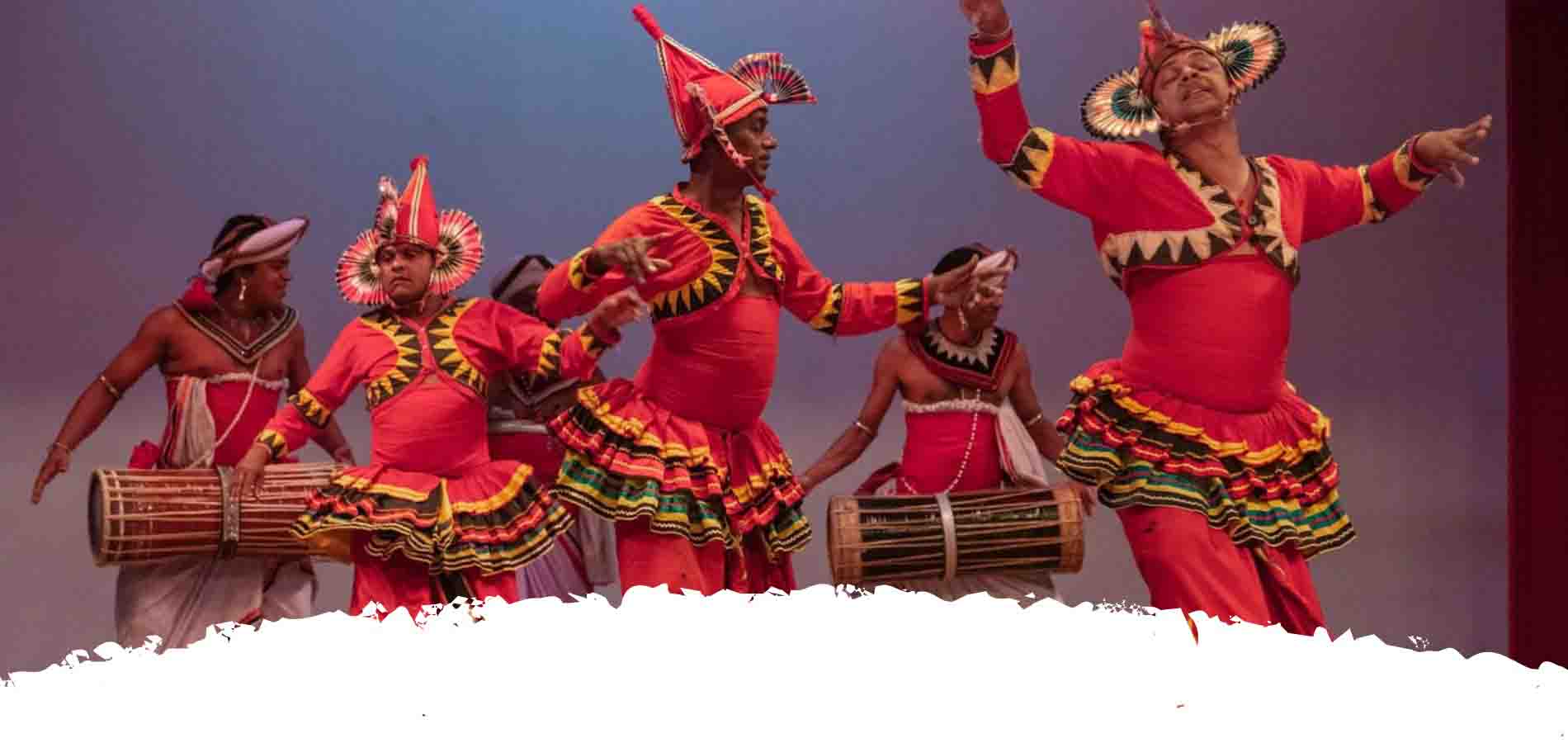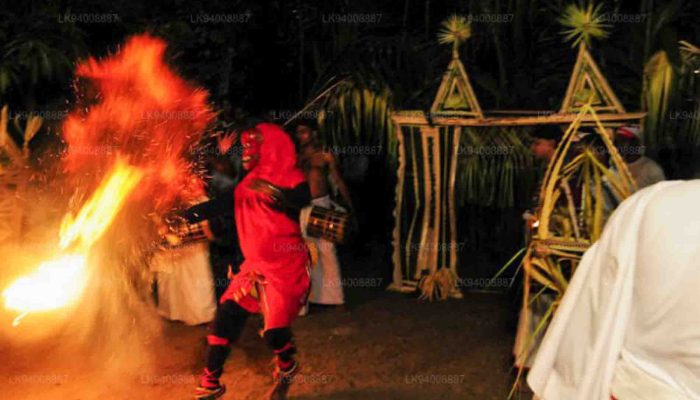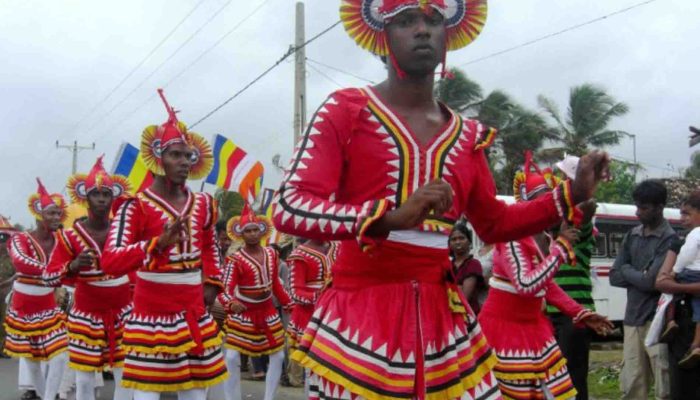Sabaragamuwa Dance: Sri Lanka

Dance is an ancient art form of Sri Lanka that was nurtured with devotion and performed with reverence. There are three dance traditions in Sri Lanka: Up-country, Low-country, and Sabaragamuwa. The Sabaragamuwa dance tradition is named for its origin in the Sabaragamuwa Province, Sri Lanka. There are four territorial divisions in terms of Sabaragamuwa dance: Ratnapura, Kalawana, Balangoda, and Badulla. Ratnapura has been historically celebrated as the heart of the Sabaragamuwa dance in Sri Lanka. The Sabaragamuwa dances, however, don’t get as much recognition as the up-country or low-country dances.
The Sabaragamuwa dance style is performed to worship the God of Saman
Sabaragamu Shanthikarma
The people of the Sabaragamuwa region perform various shanthikarma, which can be categorized into three groups: yak thovil, deva thovil, and graha Bali yaga. The yak thovil are ritualistic exorcisms performed to ‘appease’ various demons, which are part of the folk religion of the island. The yak thovil are ritualistic exorcisms performed to ‘appease’ various demons.
Yak Thovil
The sanni yakuma or daha ata sanniya is a type of thovil performed in the Sabaragamuwa region to appease one or more of the 18 sanni yakku. Other ritualistic dances include the mahason samayama, gopalu samayama, kumara samayama, daraha thovil and the suniyam yagaya. These dances are performed to appease the pancha yaksha or five terrifying demons. He added that these ritualistic dances are performed to appease the pancha yaksha, or the five terrifying demons called riri yaka, kalu yaka, abimana yaka, thoteyaka, and maha sona.
Deva Thovil
the other hand, the deva thovil are shanthikarma performed to invoke the blessings of the deities of the pre-Buddhist folk religions of Sri Lanka. Right now, the pahan maduwa is one of the most significant shanthikarma of the Sabaragamuwa region because it is the main ritual performed to celebrate and worship the goddess Paththini. Aside from the pahan maduwa, the kiri maduwa is another well-known ceremonial deva thovil performed in this region. Because of this, the ritualistic dance known as the Dig Ge Natum which was performed in veneration of the god Saman is no longer practice
Graha Bali Yagha
The rituals of the graha Bali yagha are performed to alleviate misfortune which is said to befall certain individuals when celestial bodies such as the sun, the moon, and the planets of our solar system do not move in their favour. The main rituals which make up the graha Bali yagha include the mal Bali, Thira Bali, prathima Bali, and the balagraha Bali.
Costumes, Movement, and Rhythm in Sabaragamuwa Dance
There are certain features that are unique to the Sabaragamuwa dance tradition:
- Hands and feet formations
- Musical instruments and style of play
- Singing style
- The costumes
The manner in which the Sabaragamuwa dancers position them selves and move when these dances are performed is a distinct factor of this dance form. The dancers never raise their hands above their heads; instead, their arms are extended backward at an angle to their bodies. On the other hand, the mandiya is a commonly used position in this dance form, like in the Kandyan and low country dances. The Sabaragamuwa tradition has its own distinctive costumes, songs, chants, drums, and rhythms.
According to oral tradition, the dancer must wear a costume like that of the Saman Devalaya God Saman.
- The cloth (Selaya)
- Red cloth (Pachcha wadama)
- Waste cloth
- Hattaya
- Athpota
- Forehead band
- Ralipatiya



0 Comment